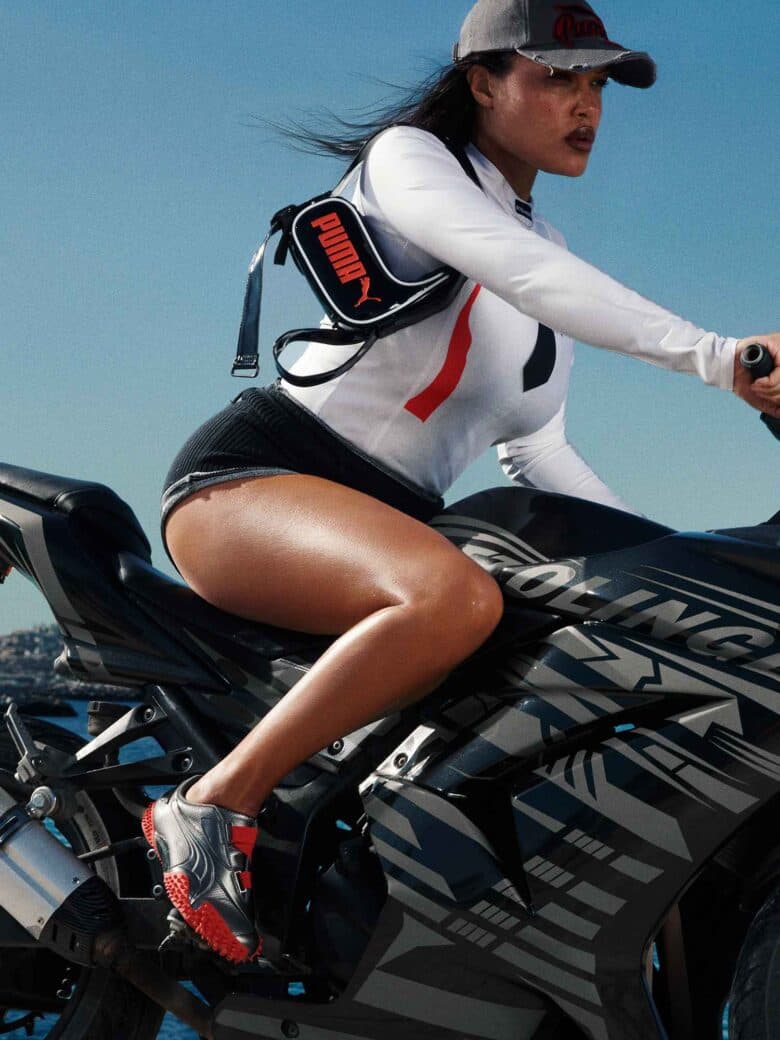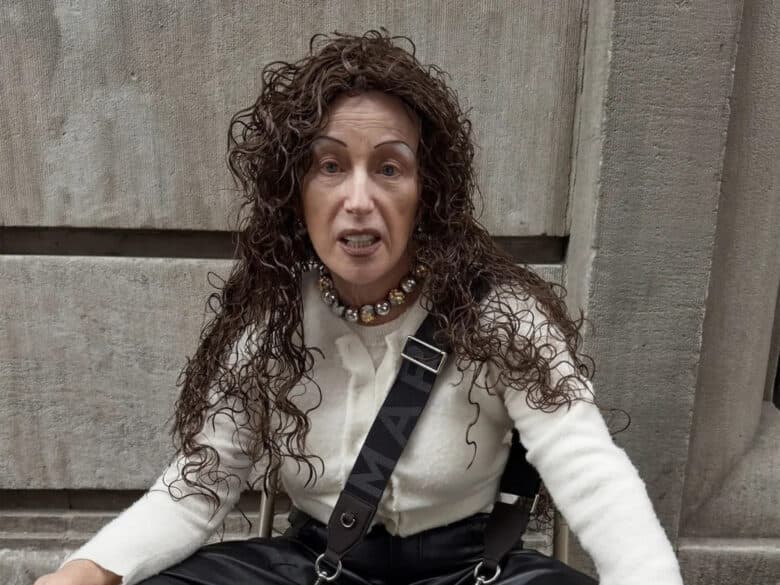Why artist Callum Eaton is more than just the ‘ATM Guy’
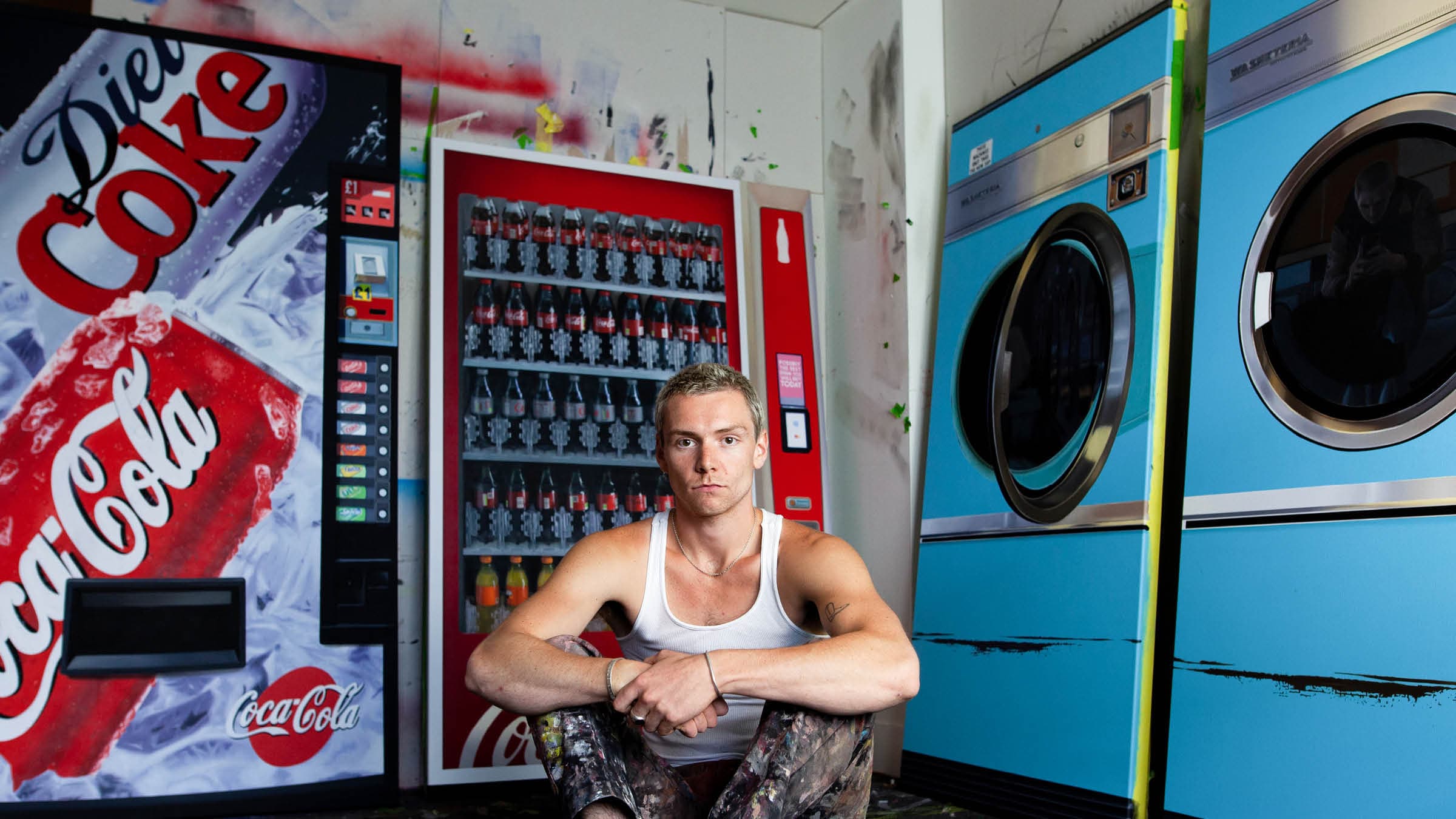
Callum Eaton is likely to be the only person in the world to have travelled all the way to Gatwick Airport just for its vending machines. In fact, the 26-year-old first got the train to Westfield in Shepherd’s Bush and then all the way to its counterpart in Stratford on his day-long pilgrimage to a bright red machine and its chemically delectable goods, chewing gum stuck on the side and, if you’re lucky, a forgotten 50p.
You do know there are vending machines in central London, or better, around your home in London Fields, don’t you, Callum? But of course, the artist is well aware there are plenty of untrustworthy, growingly neglected metal boxes able to swallow your money all over the place. But it had to be that specific vending machine. Why? It’s anyone’s guess. Only the artist knows.
“It’s like picking through a box of rings when you’re second-hand shopping. Why do you pick one and not the other? You have a feeling, a connection to one,” Eaton says, sitting in the park on a surprisingly sunny day in London, his eyes often darting off to watch squirrels play beyond the camera, blonde hair and cowboy boot tattoo on show.
Eaton has previously been dubbed the ‘ATM Guy’ following his show in Paris earlier in 2023. ‘Hole in the Wall’ introduced the artist’s knack for creating hyper-realistic images of cash machines. At first glance, that’s what they were… cash machines, ATMs, “street furniture” as the artist calls it, these services that no longer provide much of a service unless it’s for £60 on a Friday night or £20 to put in your grandchild’s birthday card. Though, like most of Eaton’s work, there’s more to it than meets the eye. It’s not until you stand in a gallery, where the underlying function of its existence is to sell the works it presents, and to see a cash machine on the wall in the corner might you then realise why you’re there. It’s art with a wink and a nod to its own purpose. Nice one, Callum.
But now the artist has gone further and taken even more street furniture under his creative wing in his newest show ‘Look But Don’t Touch’. Running from August 17 to September 9, the show presents a streetscape of the forgotten and growingly needless things that now serve only as a blur in the corner of your eye: vending machines (Gatwick’s own, no less), telephone boxes, those street-side photo booths that make everyone look like they’ve got a criminal past, and laundrette washing machines with a door that can’t quite close. They are all remnants of change (literally), cornerstones of consumerism that couldn’t keep up with consumerism. Needless, despondent, redundant, whatever you want to call it, Eaton wants you to know that the work, like the object itself, is not the main attraction.
Whether it’s to memorialise the mundane or to stick two fingers up to the system in some way, Eaton talks to HUNGER about ‘Look But Don’t Touch’ and the power of painting something before it disappears forever…
Ry Gavin: Hey Callum! Let’s get into it: What was the starting point for the show?
Callum Eaton: It all started with this one painting I made of a cash machine where a drunk friend of mine tried to use it at an exhibition opening. It was a cash bar and even though he knew it wasn’t real, the way he interacted with it made me think there’s something in this idea of trompe-l’œil paintings of everyday realistic objects. It disarms you to see a painting of something so commonplace done in such a detailed and specific and to-scale way.
Moving on from the cash machines, I wanted to challenge myself even more. So I started with vending machines thinking that that was going to be what the next body of work would be but I didn’t have the time because each of the vending machines take like a month and a half. I needed 10 in five months. So, it became about overlooked street furniture… Everything seems to be getting removed as well. I paint it and then it gets torn down. I don’t know if I have the opposite of the Midas Touch or something.
What do you mean they all get ripped down?
I’ve seen that four out of the 13 cash machines since the last show have been ripped out. They don’t exist anymore. The elevators I painted for my show in my studio building, that’s about to get demolished in the next couple of months. It’s like I make a painting and then I find out it’s going to disappear.
That’s eerily apt about what you’re saying with your work. You should paint someone like Donald Trump and see what happens!
I should try that!
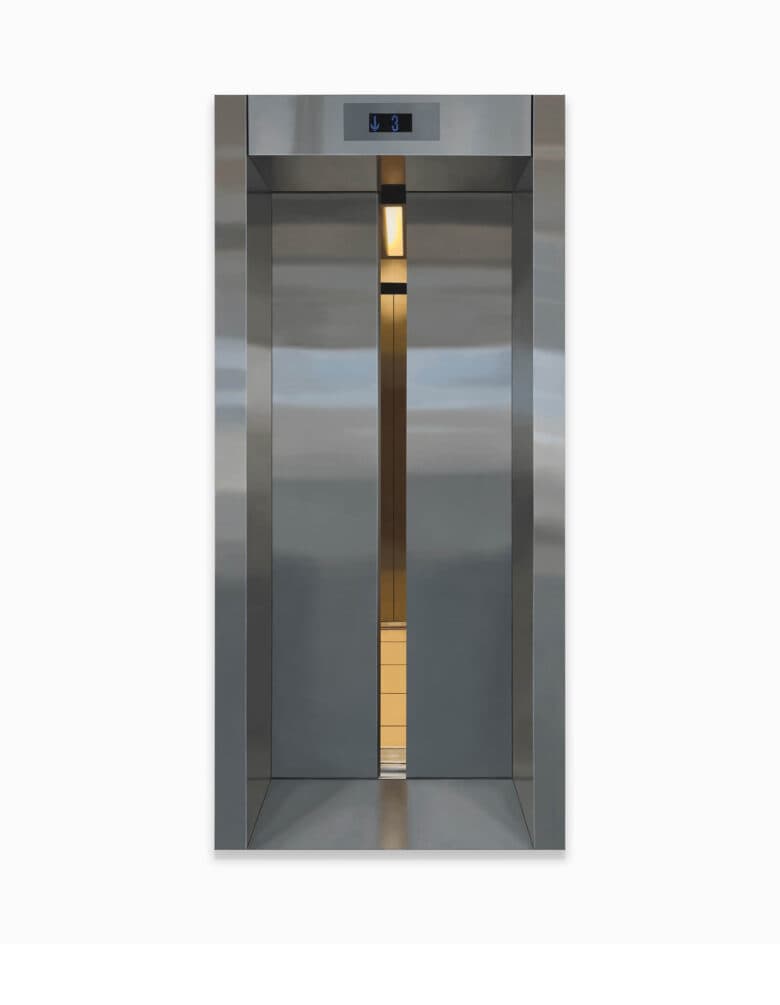
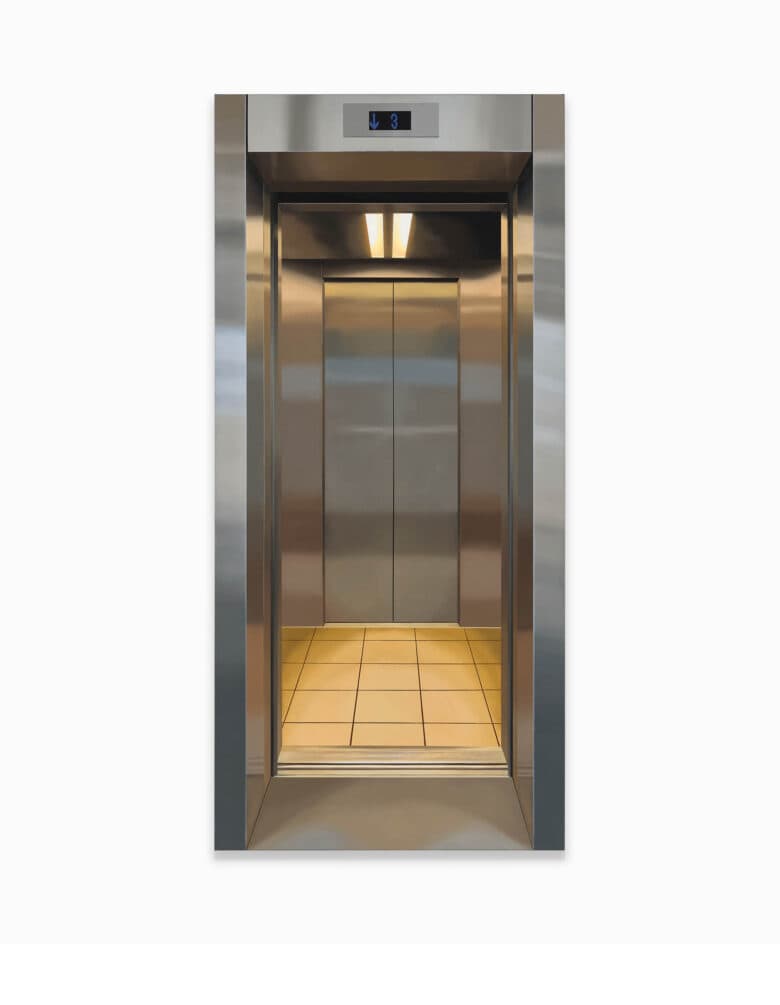
What’s behind the name ‘Look But Don’t Touch’? There is something about the works that really makes you want to reach out and grab them… Almost to figure out if they’re cake or not.
I feel like a lot of art I look at can be quite serious sometimes. I like flat geometric paintings, and to then make a painting of a vending machine or something that kind of looks like a homage to the square. ‘Look But Don’t Touch’ refers to that first ATM painting I made when someone tried to use it. You want to press the buttons, everything is shiny and 3D and it looks real.
What is the deciding factor for an object to interest you enough to paint it or not?
Often there’s a feeling. It’s a really hard question to answer because loads of people would send me photos of ATMs or vending machines but loads of them just don’t have that thing, there’s a quality.
It reminds me of when people search through fruit or vegetables looking for the ripest one…
That’s probably the best analogy. Or it’s like picking through a box of rings when you’re second-hand shopping. Why do you pick one and not the other? You have a feeling, a connection to one.
When did you start to get fixated on street furniture?
I was a portrait painter for years. I started to really like the detail in hands when people were doing things and I got super interested in rings if someone was holding something. Throughout lockdown, I was painting all of these lighters and Rizla packets. One day I wanted to make a painting that feels more real than what I’m doing. I walked past an ATM and I thought that could be an interesting painting.
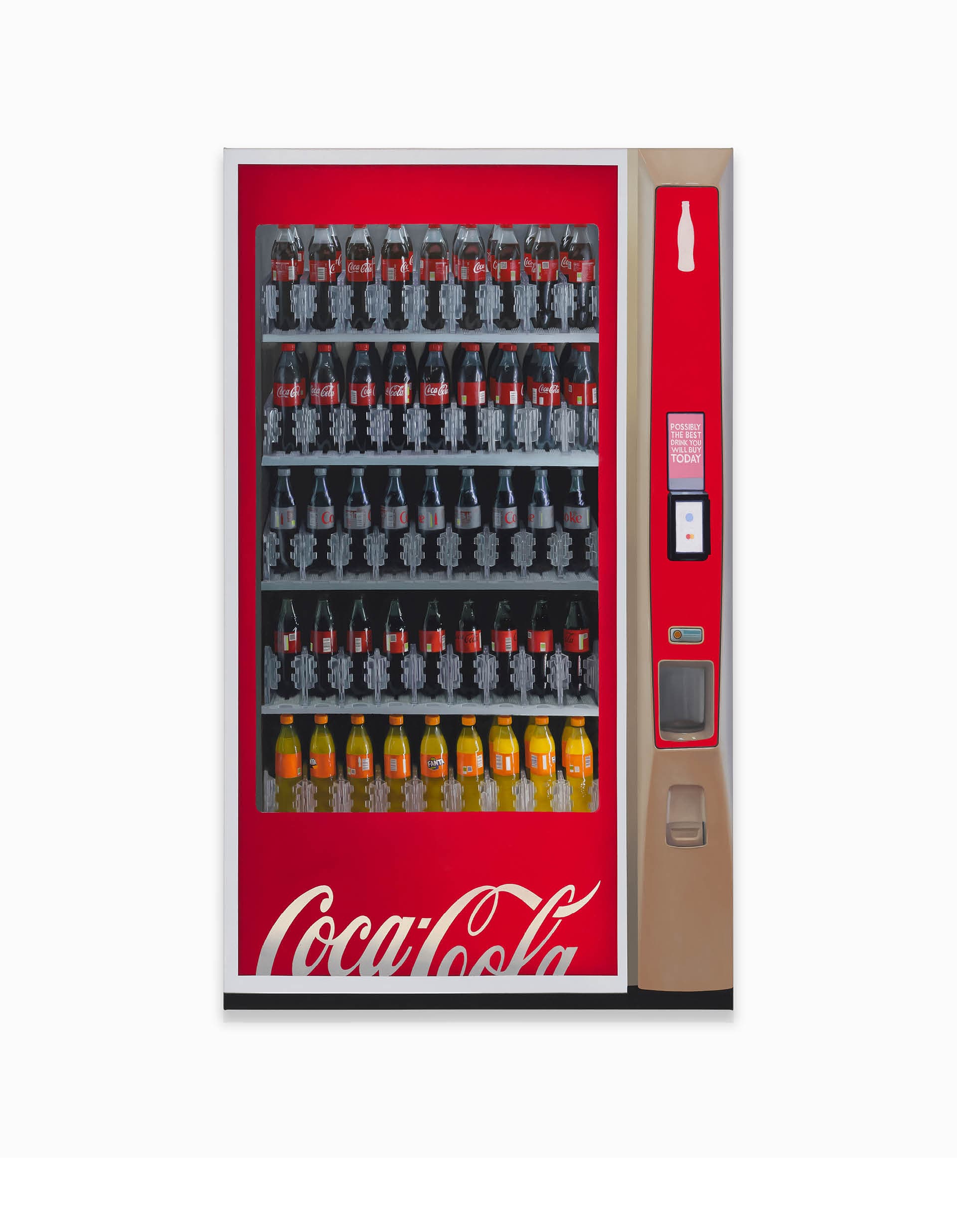
What you’re doing is memorialising these street staples in a way?
Absolutely. There’s definitely an archival element to this stuff. It’s like when you go to a foreign country and you see a telephone box – every country has their own signifiers and styles. It’s like that Geomapper guy who you can show a street somewhere in the world and he knows exactly where it is. It’s cultural significance.
Your work is very intricate and realistic – what’s the process?
It’s weeks of work. I literally wander around and I’ll pick a different route to the studio and I’ll see another telephone box. It would sit on my camera roll for months and then I’ll move it onto my laptop and I’ll crop it so that it looks like a painting and maybe try it out on a wall and decide if it works. Then I normally go back to where the object is with a tape measure and get the canvas made.
My process has changed a lot since working with Oli [Epp]. It was very much more starting in the top left corner and just working my way across.That’s how I used to paint and it’s such a bad way of doing it. It’s been really helpful having conversations with Oli and working with him on his paintings, and speaking to Alexander Guy. If [Guy] is painting a fridge with objects in it, he’ll paint the entire fridge empty and then start putting objects in.
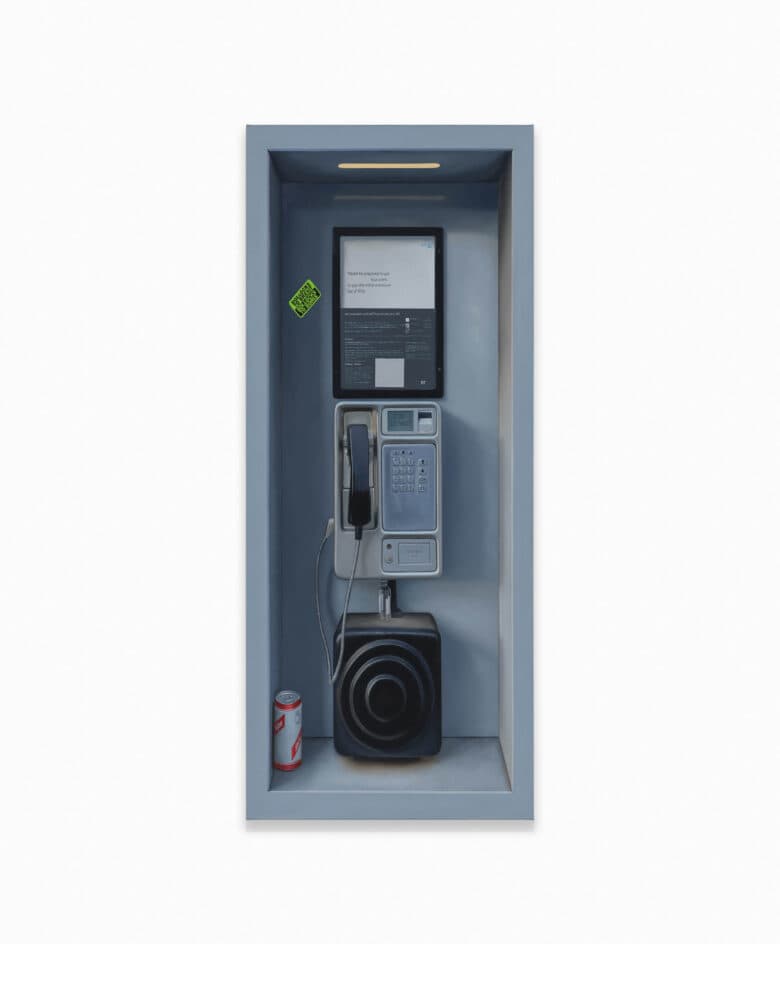
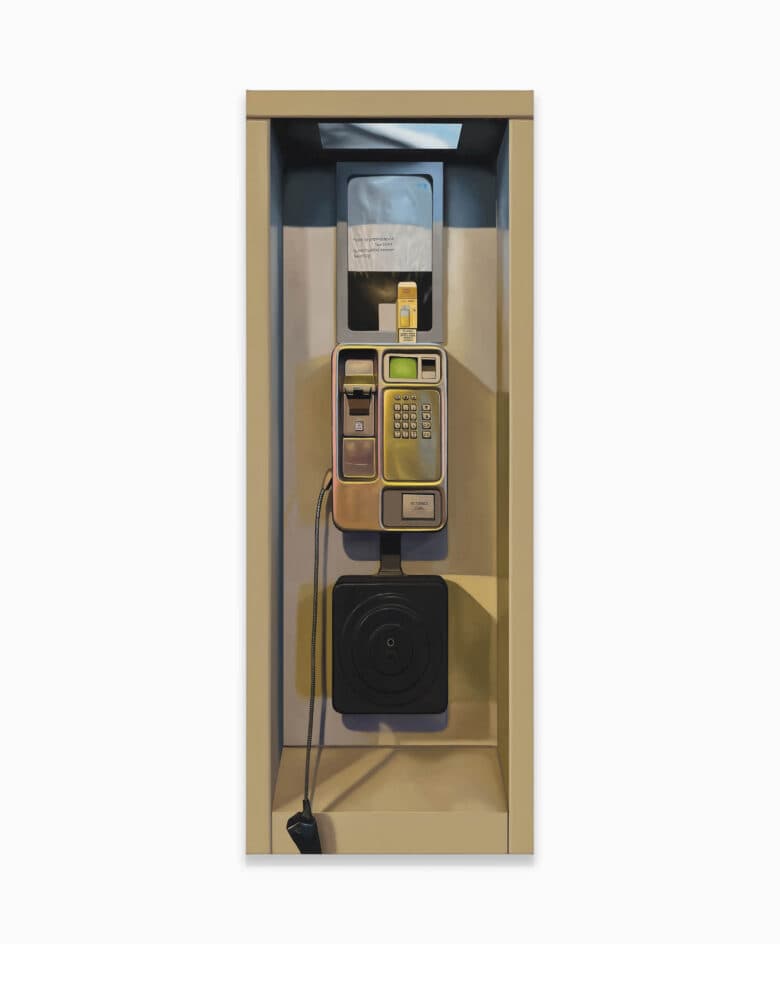
To what extent do dreams come into your work? The elevators in particular, they look like something that exists but somewhere you have never been before, in liminal spaces or the backrooms…
This is actually quite important, and I’ve never vocalised this before. None of the objects are the main attraction of anything. You don’t go on a pilgrimage to a vending machine. You pass a vending machine on your way somewhere. You don’t track down and try to find a telephone box; you stumble past one. Most of the time I see them being used for either homeless people trying not to get wet or people on their mobile phones making a call in the rain. They’re never the main attraction.
Liminal spaces is something I’ve thought about before. The in-betweens and nowhere places. They’re not the sites of interest. The elevators get you to where you need to be. They’re not what you’d see on a heritage map of London. They’re an inconvenience or convenience. For example, to find the vending machines I had to go to the two Westfields because I couldn’t find any vending machines in town. They don’t really exist in central London or the outskirts. So I had to go to shopping centres and then they were always shoved, funnily enough, right next to the photo booth machines, next to the toilets in really dark areas and really difficult to photograph. Then I had to go down to Gatwick, which was the only other place I knew that had the vending machine that I wanted to photograph.
How did the creation, or the need to create these paintings, perhaps coincide with your personal thoughts on capitalism and consumerism?
There was definitely a thought that I was going to be making these paintings to exist in an art space that then would sell for money and they’d be talking about money in quite a potentially crude way. With the cash machines, everyone would always laugh because I’m pretty sure you can buy a cash machine for cheaper than you can buy the paintings of the cash machines. There was definitely this element of showing these paintings of cash machines or the vending machines, and showing how they were related to the likes of Warhol and interest in pop culture and, potentially, a capitalist critique.
People often put a lot of weight on the fact that, especially with the cash machines, it was a critique on consumerism and the art world’s complicity and capitalist structures and stuff. And of course it is, but I’m also part of that world. So it’s tongue in cheek. It’s like biting the hand that feeds you… but not too hard.
That’s a great note to leave it on, Callum. See you at the show!
‘Look But Don’t Touch’ runs from August 17 to September 9 at Carl Kostyál, London
